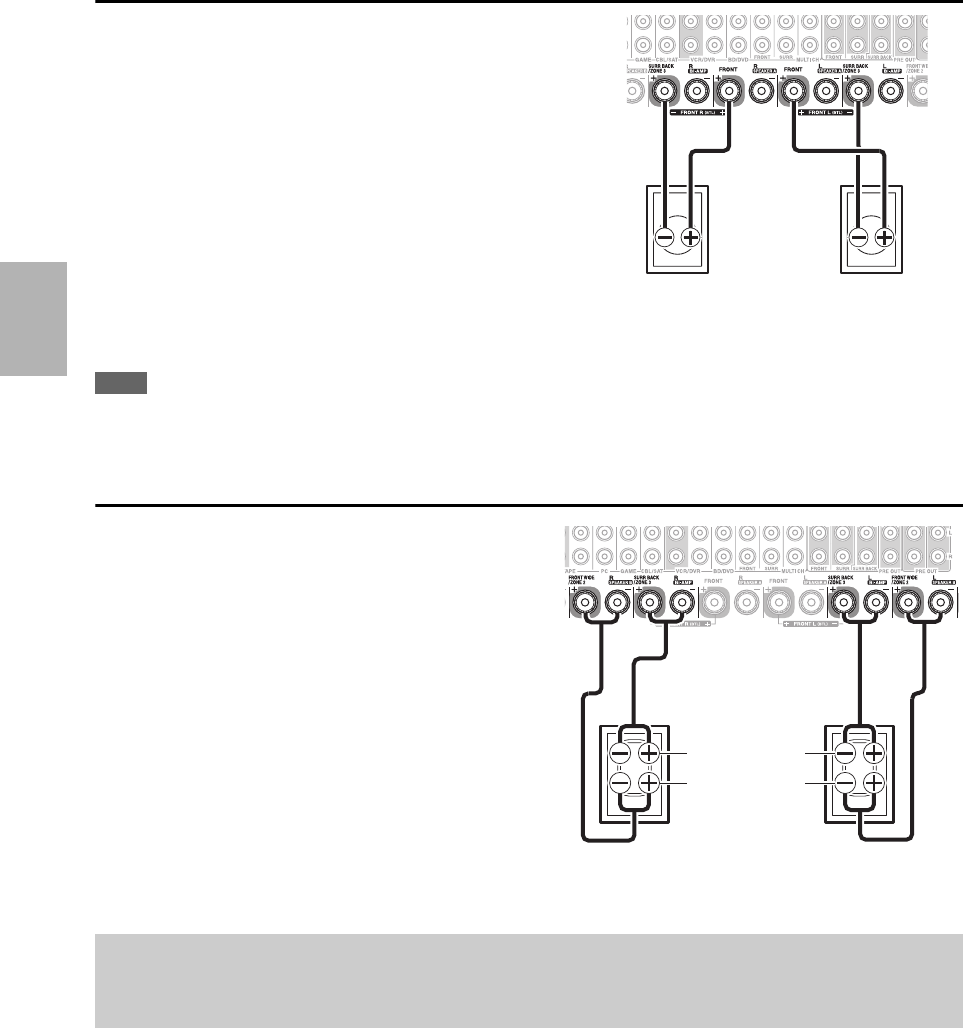
18
En
Bridging the Front Speakers A
The FRONT L/R and SURR BACK/ZONE 3 L/R terminal
posts can be used with front speakers and surround back speak-
ers respectively, or bridged together to provide almost double
the output power for the front speakers A.
• When bridging is used, surround back speakers cannot be
used.
• For bridging, the positive (+) FRONT L/R and SURR
BACK/ZONE 3 L/R terminal posts are used, but the negative
(–) FRONT L/R and SURR BACK/ZONE 3 L/R terminals
are not.
• Once you’ve completed the bridging connections shown below
and turned on the AV receiver, you must set the “Speakers
Type(Front A)” setting to “BTL” to enable bridging (➔ 51).
• When front speakers A are bridged, front speakers B must be
wired normally or not used.
Note
• Use only front speakers with an impedance of 8 ohms or higher for bridging. Failure to do so may seriously damage the AV
receiver.
• When using bridging, make sure that your front speakers can handle the additional power.
Bi-amping the Front Speakers B
The FRONT WIDE/ZONE 2 L/R and SURR BACK/
ZONE 3 L/R terminal posts can be used with front wide
speakers and surround back speakers respectively, or bi-amped
to provide separate tweeter and woofer feeds for a pair of front
speakers B that support bi-amping, providing improved bass
and treble performance.
• When bi-amping is used, surround back speakers cannot be
used.
• For bi-amping, the FRONT WIDE/ZONE 2 L/R terminal
posts connect to the front speakers’ woofer terminals. And
the SURR BACK/ZONE 3 L/R terminal posts connect to
the front speakers’ tweeter terminals.
• Once you’ve completed the bi-amping connections shown
below and turned on the AV receiver, you must set the
“Speakers Type(Front B)” setting to “Bi-Amp” to enable
biamping (➔ 51).
• When front speakers B are biamped, front speakers A must be wired normally.
Left speakerRight speaker
Important:
• When making the bi-amping connections, be sure to remove the jumper bars that link the speaker’s tweeter (high) and woofer (low)
terminals.
• Bi-amping can only be used with speakers that support bi-amping. Refer to your speaker manual.
Woofer (low)
Left speaker
Tweeter (high)
Right speaker


















